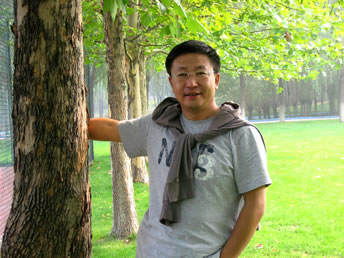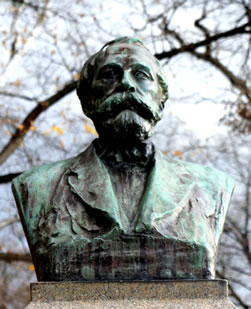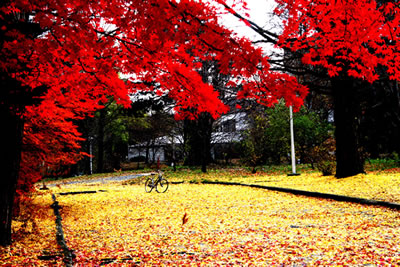| Annual Newsletter of the Slavic Research Center, Hokkaido
University |
Japanese English |
-->List
of All Publications-->Annual
Newsletter-->no.18 |
|
| No.18, February 2011 |
|||
| Remarks from the Director of the SRC |
| Global COE Program “Reshaping
Japan’s
Border Studies” |
Speakers of the Symposium (Dec. 3–4,
2010) |
| Essays by Foreign Fellows |
||
| Feng Yujun |
Alexander Morrison |
|
Autumn at Hokkaido University: Enchanting Oil Painting and Moving Music
Feng Yujun (China Institute of Contemporary International Relations / foreign fellow, SRC, 2010–2011)
Hokkaido University in the fall is really colorful. It is like a multihued painting. No matter from which angle, you will get a different esthetic.
Golden ginkgo leaves dance in the autumn wind, completing the final section of a beautiful ballet move, and fall to the green grass, as if to lay over it a golden quilt. Next year, the leaves will decompose into the soil, making the land more fertile.
 |
| The author |
The autumn maple enjoys the flawless, beautiful show. The red maple leaf looks like flame, as if mapping the sunset sky, making one truly appreciate life and its great and noble ideals. Clark’s statue renders the leaves yet more vivid. He said, “Boys, be ambitious!,” and his motto seems to echo in my ears. The autumn rain is delicate and lingering. The rain of fall is a superb painter, tinting the world with the three colors of red, yellow, and green with an indescribable freshness. The rainbow that follows the rain across the sky, against the background of Hokkaido University, is even more beautiful!
Hokkaido University in the fall is like a symphony. It is like Mozart’s violin music, having both andante cantabile and passionate movements.
Hokkaido University in the fall is quiet. It reminds me of the Heavenly Temple of Stillness. A river flows quietly through the campus, silent, continuous, as if time flows away from us, unknowingly, unchanging. Floating on the pond are a few fallen leaves, red or yellow, and the reflected blue sky and white clouds in the water add to these bright colors. A gust of autumnal wind blows and the water ripples now and again, as if a string is beginning to quiver, flowing gently to a beautiful melody.
 |
| Clark: “Boys, be ambitious!” |
Hokkaido University in the fall is loud and vibrant. In the pond frolic ducks, sometimes winging into the sky, and as they fan their wings, one can feel a sense of rising power. Through rolling leaves hurry teachers and students, forming bright eddies and swirls. As they flow on campus, so knowledge is cast in all directions. Hokkaido University Museum is solemn, as if a wise elder, not perhaps good with words but imbued with the light of knowledge.
There is a rich collection to showcase the deep history and countless glories of Hokkaido University. This year, Hokkaido University was witness to a happy event: Professor Akira Suzuki received the Nobel Prize in Chemistry.
 |
| Enchanting oil painting |
This adds to Hokkaido University’s autumn symphony an extra, venerable movement.
The Slavic Research Center is located in the corner of Hokkaido University. It is its epitome, the essence of its quiet peacefulness, yet also reflecting its vigor and glory. Here, the library is an ocean of knowledge; the academic conference, the platform for exchange of ideas.
 |
| Ginkgo Road: Take me to Hokkaido University |
At night, translucent moonlight, covered with a layer of snow, illuminates the Hokkaido University campus. Walking through the quiet paths, I also like a touch of color in my picture of Hokkaido University, like a motif in a movement of our Hokkaido symphony that makes us sing out.